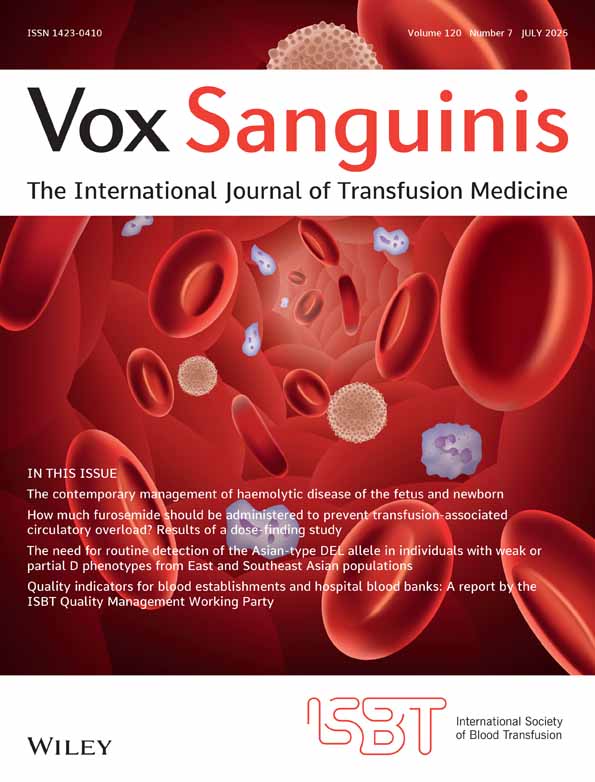Prevalence of illicit drug use in plasmapheresis donors
Abstract
Background and Objectives No data are presently available concerning the frequency of illicit drug use in plasmapheresis donors. We therefore examined source plasma units produced in the United States (US) and in Germany for evidence of illicit drug use among donors.
Materials and Methods Seventy-five US plasma units from 10 different US states and 75 German plasma units that had been analysed principally for their protein composition were screened for drugs. Determinations were made, using automated immunoassays, of the presence of cannabis, cocaine, amphetamine, methamphetamine, methylenedioxymethamphetamine (MDMA), methylenedioxyethylamphetamine (MDE) and opiates. Positive results were confirmed by gas chromatography–mass spectrometry.
Results Eleven US plasma units were found to be positive for cocaine (14·6%), whereas all German samples were cocaine negative (P = 0·0007). Fifteen US plasma units (20%) and one German unit (1·3%) were confirmed as positive for cannabis (P = 0·0003). Three out of 75 US plasma units were positive for both cannabis and cocaine. In none of the 150 samples were amphetamine, methamphetamine, MDMA, MDE or opiates detected.
Conclusions Our results strongly suggest differences in cocaine and cannabis consumption between US and German plasmapheresis donors. If these results are confirmed by larger-scale studies, random drug screening (including cocaine) of donors should be implemented in order to reduce the number of drug-containing plasma units, especially in the USA.




